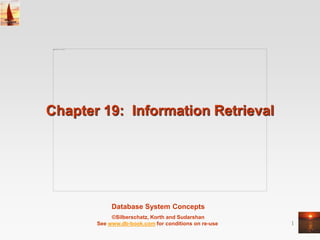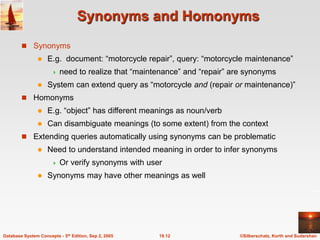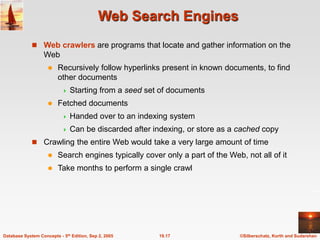The document discusses information retrieval systems and concepts. It describes how information retrieval systems use simpler data models than databases, organizing information as unstructured documents without a schema. It covers techniques for indexing documents, measuring retrieval effectiveness, relevance ranking using terms and hyperlinks, handling synonyms and homonyms, and the role of directories and classification hierarchies. Information retrieval systems are used to locate relevant documents based on keywords, and their applications include web search engines.
























